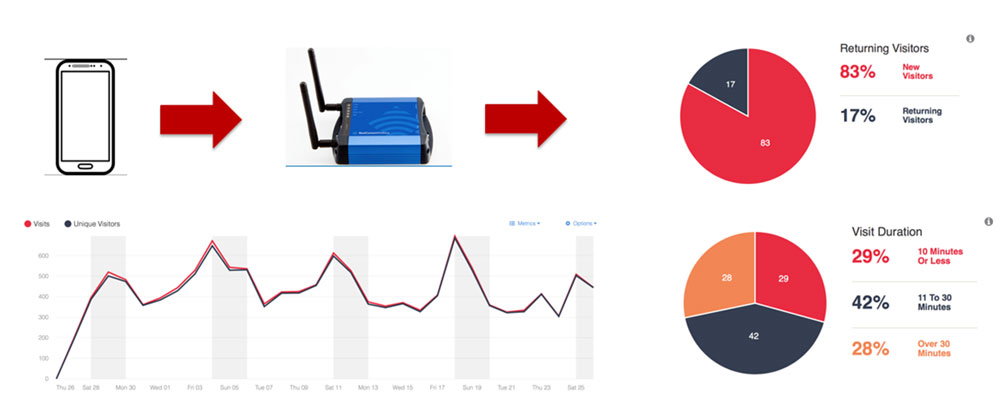Lifestyle marketing agency MKTG NZ has been trialling the Isaac proximity sensor with key clients over the past year – a product that will now be widely available in 2018. The sensor is pegged to significantly reduce the pain points of tracking and measuring the effectiveness of live experience and retail environments.
The device comes in two sizes: The larger is ideal for retail spaces and for events and brand experiences, and the smaller (Isaac Junior) is currently being used in close range brand interactions with consumers – such as supermarkets for 1:1 product sampling.
The sensors work by intercepting smartphone wifi transmission – not when the consumer’s phone is connected to wifi, but when it’s searching for signals, which it does constantly when wifi is switched on.
“For most of us, the only time wifi is switched off, is when we are on a plane,” says Jacqui Marks, the Auckland-based head of engagement at MKTG.
Isaac works independently of any existing IT infrastructure, it requires just a power point and for Isaac Junior, a battery pack and wifi dongle, to operate and collect data.
“With Isaac, Holden was able to access information that was previously invisible.”
Each smartphone omits a unique ID, making it possible to identify not only numbers of visitors (and people walking by) but also repeat visitation, and when multiple sensors are employed Isaac can track the unique path taken through a particular space.
While Isaac can track each smartphone carrying person, it doesn’t collect any personally identifiable information, each ID that is tracked and reported into dashboard analytics is completely anonymous (and therefore legal).
“The team at MKTG believe the potential and possibilities for Isaac are extensive, and has seen early results with Holden New Zealand, the first brand to adopt the technology, and apply it for use in dealerships,” Marks said.
“With Isaac, Holden was able to access information that was previously invisible, including being able to identify a percentage of customers who are shopping in multiple locations.
“They could also benchmark dwell time, and identify warm leads based on the percentage of repeat visitors to each location. When warm lead numbers are stacked up against sales, this provides unique insight on the volume of opportunity there may still be to convert.”
- For more information on Isaac, contact MKTG on 09 309 1701 or email hellonewzealand@mktg.com
- www.MKTG.com
Share this Post



